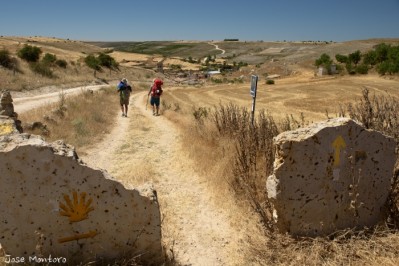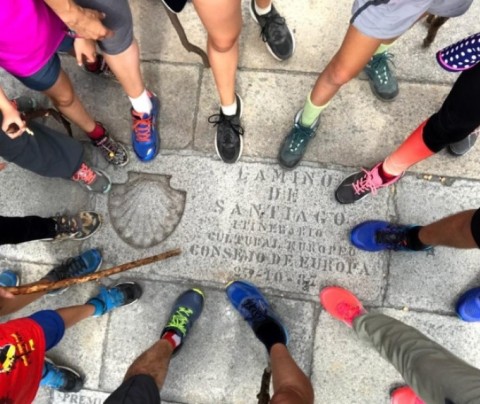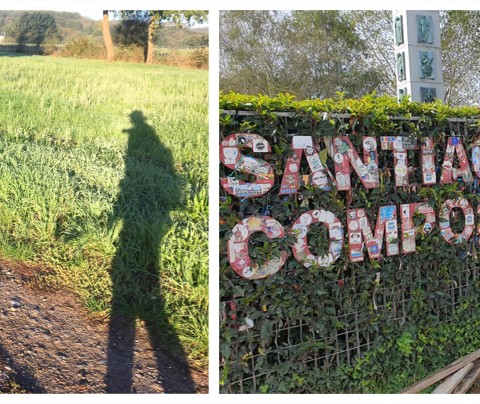Camino de Santiago and Covid-19

The Camino de Santiago is an ideal destination to recover after the serious Covid-19 crisis that we have had to live through. Nature, fresh air and moments to disconnect and find oneself make the Jacobean Routes a place, if possible, more special.
Organizing the Camino de Santiago is very simple. We only have to take into account some aspects, especially in the coming months. Today we leave you some tips to plan the Camino de Santiago in times of Covid-19.
1. Requirements to travel to Spain
Pilgrims arriving in Spain from other countries must ensure that they comply with the health requirements demanded by the health authorities.
Since June 9, any traveler 12 years of age or older from a country considered at risk has to carry a COVID digital certificate issued by a member state of the European Union (EU). The supported certificates are the following:
- Covid vaccination certificate. Valid 14 days after the second dose.
- Negative PCR test. Made 72 hours before entering Spain.
- Negative antigen test. Made 48 hours before entering Spain.
- Recovery certificate that certifies having passed the disease.
You can check the list of countries considered at risk here.
2. Previous reservation in hostels on the Camino
The Camino de Santiago has a wide and consolidated network of accommodation and assistance. Although the number of establishments varies according to the route chosen, the essence of the Camino de Santiago has been based on hospitality for centuries.
Until now we had two options: to plan our route reserving the accommodations in the towns that we had planned to sleep in. Or sleep in public hostels, in which reservations are not accepted and the pilgrim got a place in strict order of arrival.
The Covid-19 crisis has forced to temporarily alter aspects of the Camino like this. From El Camino con Correos we recommend that you reserve your accommodation in advance and check that they are open.
There are still many hostels and hostels that have not recovered the service or that have done so with the obligatory capacity reduction. So the most advisable thing is that you make sure your place before embarking on the adventure of the Camino. The authorities also recommend online registration and payment, so if you can do it before you will avoid unnecessary contacts when you arrive at the hostel.
To help you with this work, you can use the Accommodation search engine, with about 4,000 hostels, hostels, pensions, hotels and rural houses present in one of the 10 most popular routes and classified by type of establishments and localities. Here we leave them for Caminos:
- Camino Francés Hostels
- Camino Portugués Hostels
- Camino del Norte Hostels
- Camino Primitivo Hostels
- Camino Ingles Hostels
- Camino Fisterra and Muxía Hostels
- Vía de la Plata Hostels
- Camino Sanabres Hostels
- Camino de Invierno Hostels
- Camino Mozárabe Hostels
Galicia's public hostels do not have a prior reservation. Occupancy is on a first-come, first-served basis, opening at 1:00 p.m. and a price of 8 euros. The capacity of Galician public hostels is 100% but it is necessary to present the Covid Passport to stay in the Galician public network.
3. What to bring in your backpack on the Camino after Covid-19
In addition to the basics, the pilgrim's backpack should include elements that are already everyday in our “new normal”.
Do not leave the house without putting masks in your backpack, necessary in hostels, bars, restaurants, supermarkets ... and whenever it is not possible to respect a safety distance of 1.5 meters. It is also advisable that you travel with a hydroalcoholic solution that allows you to maintain proper hand hygiene.
In case of sleeping in a hostel, pilgrims are advised to bring their own sleeping bag to facilitate hygiene measures in the rooms.
4. Postal Services for the Camino de Santiago
When planning your Camino de Santiago remember that in Correos we offer you a whole series of services to help you enjoy the experience. All services can be booked on our website or at the Post Office.
The backpack transport service (Paq Mochila) is available from November 1 to Easter 2022 on the Sarria-Santiago route.
We insist on recommending the option of contracting and paying online to avoid handling cash or unnecessary contacts in the accommodations. In addition, government recommendations are committed to suppressing all kinds of brochures and printed documentation in shelters, including hiring envelopes. For greater security, the Paq Mochila has a traceability system since this year, by which you will receive a notification each time your luggage is collected at the hostel and delivered the next.
To guarantee the safety of clients and workers, at Correos we have increased security measures in all our services. You can read them here.
Pilgrims will also be able to use other Post Office services for the Camino such as the Paq Bicicleta to send bikes, the Luggage storage to leave their things in Santiago or the Paq Peregrino to send suitcases, backpacks and packages to the more than 150 post offices in the Camino.
5. Visits to the Cathedral of Santiago and Pilgrim's Mass
Throughout this Holy Year, the Compostela temple can be visited from Monday to Sunday from 7:00 a.m. to 9:00 p.m. with entry through the Platerías door or the Holy Door.
The pilgrim's Mass takes place in the Cathedral of Santiago de Compostela. Every day it is celebrated at four times: 7:30 am, 9:30 am, 12:00 pm and 7:30 pm at the main altar of the Compostela basilica. These hours are complemented by the daily mass at 11 am in the Corticela chapel.
At 10:30 a.m. the Pilgrim's Mass also takes place in English in the chapel of the Pilgrim's Reception Center.
6. Pick up the Compostela
The International Center for the Reception of the Pilgrim, the place on Carretas street where the Compostela is delivered (commonly and erroneously called Compostelana), has the following hours: from 09:00 a.m. to 7:00 p.m. (the closing time can be advanced up to 60 minutes before depending on the influx of pilgrims). We remind you that the Pilgrim Reception Office closes on December 25, Christmas, and January 1, New Year's Day.
At that time you can visit the center and request the Compostela after certifying that the Camino has been completed by showing the Pilgrim's Credential. However, the procedure for collecting the Compostela has undergone slight variations to guarantee the safety of the pilgrims and the staff of the center itself. We detail the steps to follow:
- Pre-registration. Before going to the Pilgrim's Office, a pre-registration must be made on the website www.oficinadelperegrino.com indicating all the information that is requested to certify the pilgrimage to Santiago (name, Camino made, starting point ...).
- Remove the ticket. Once at the Pilgrim's Office you must collect the ticket with your turn.
- Check the queue. Check the QR code that appears on your ticket, which will indicate the approximate time you can pick up your Compostela. This way you will know what time you have to report, which will allow you to avoid long waits as well as causing crowds at the Office.
- Pick up the Compostela. Go to the Pilgrim's Office at the indicated time and collect your Compostela.
In the Pilgrim's Office you can also find our Post Office open to send bicycles, suitcases or walking sticks ... or to make purchases of stamps, postcards or souvenirs.
Remember that you have more recommendations to prepare the Camino de Santiago in our section of the blog Tips for the Camino and that our postmen, who tread the Jacobean Routes day by day, will answer any questions you may have. Buen Camino, peregrinos!
* The image that illustrates this article is by José Montoro Manrubia
Your email address will not be published.
Mandatory fields are marked with *






